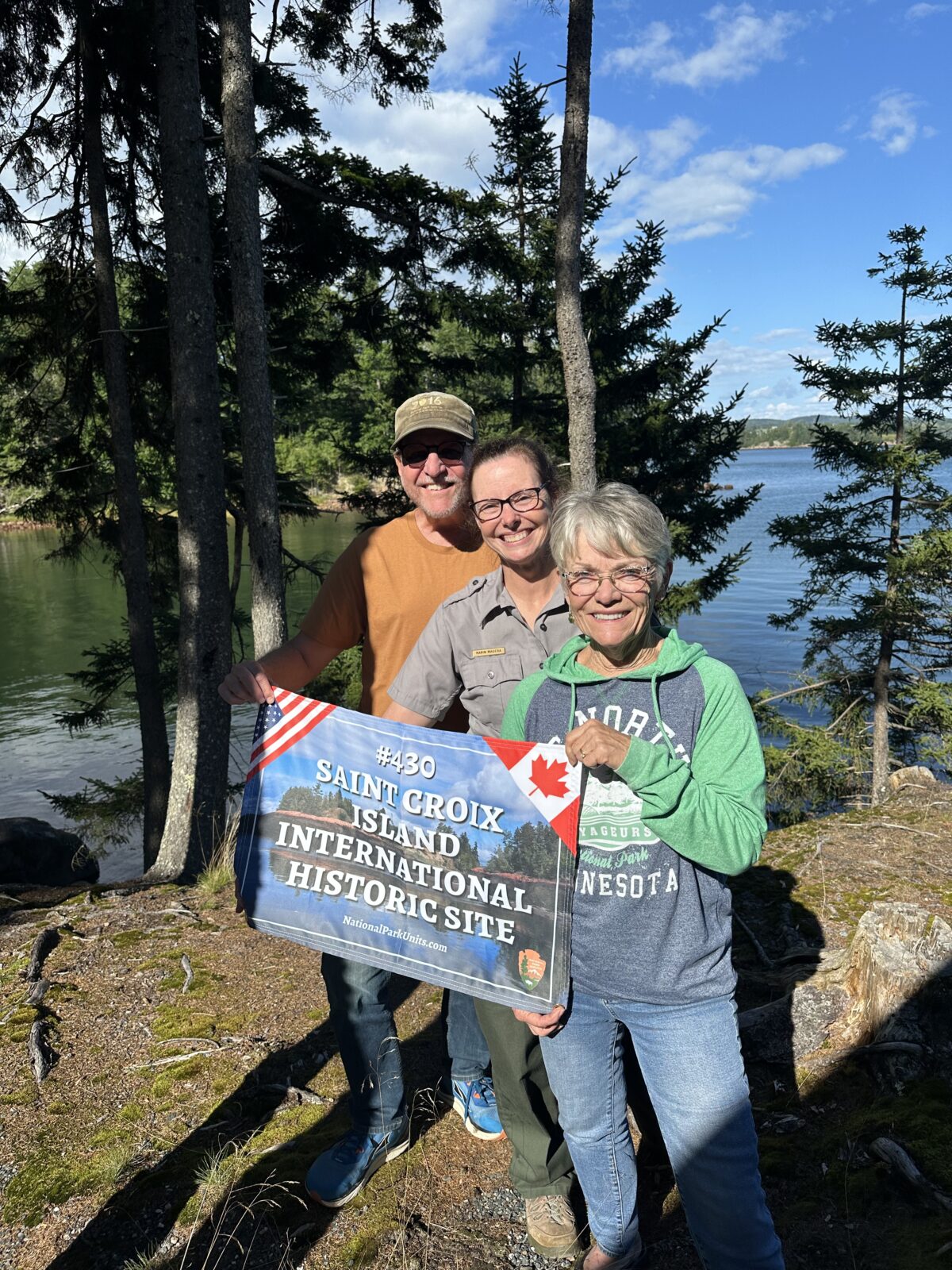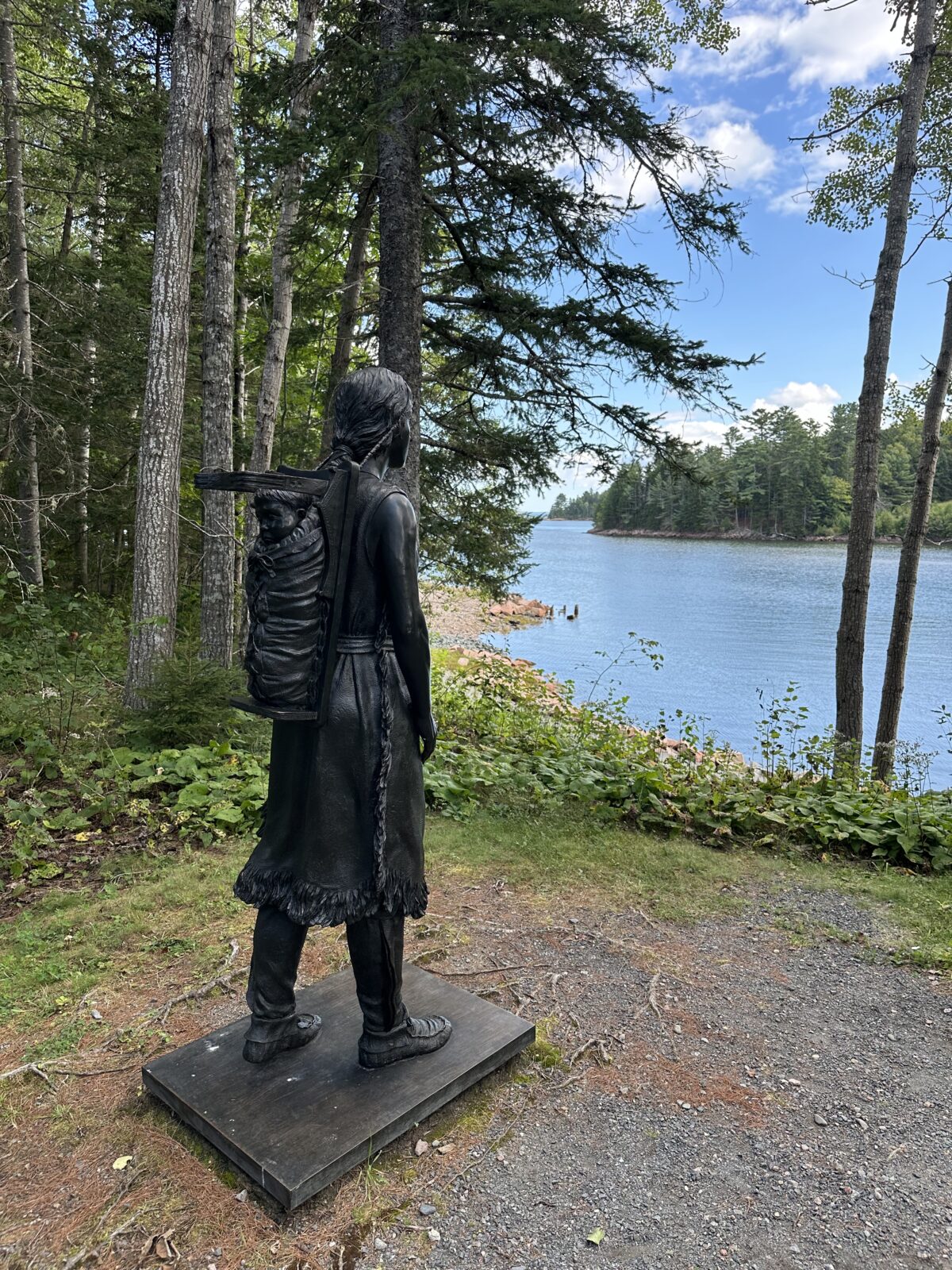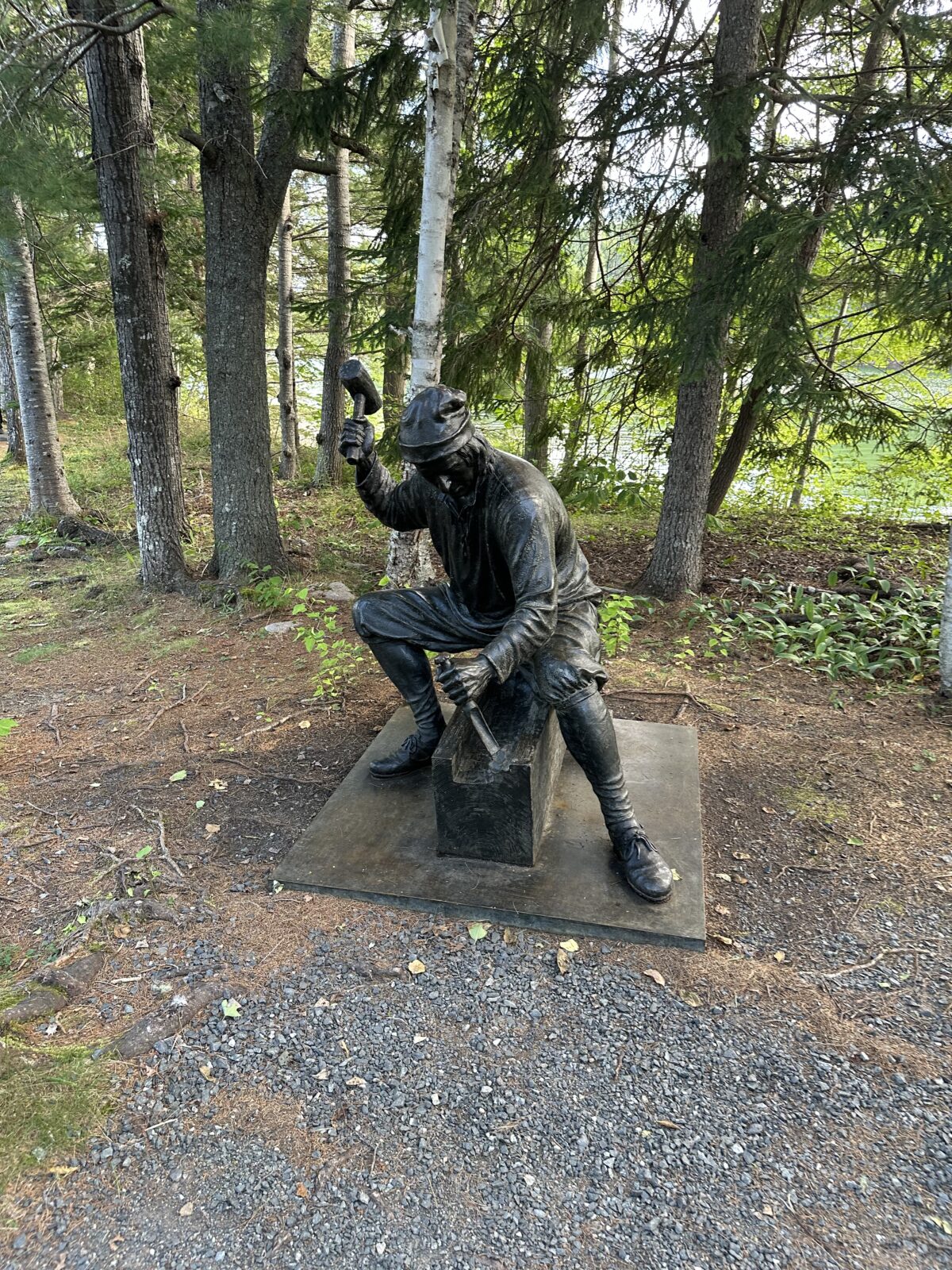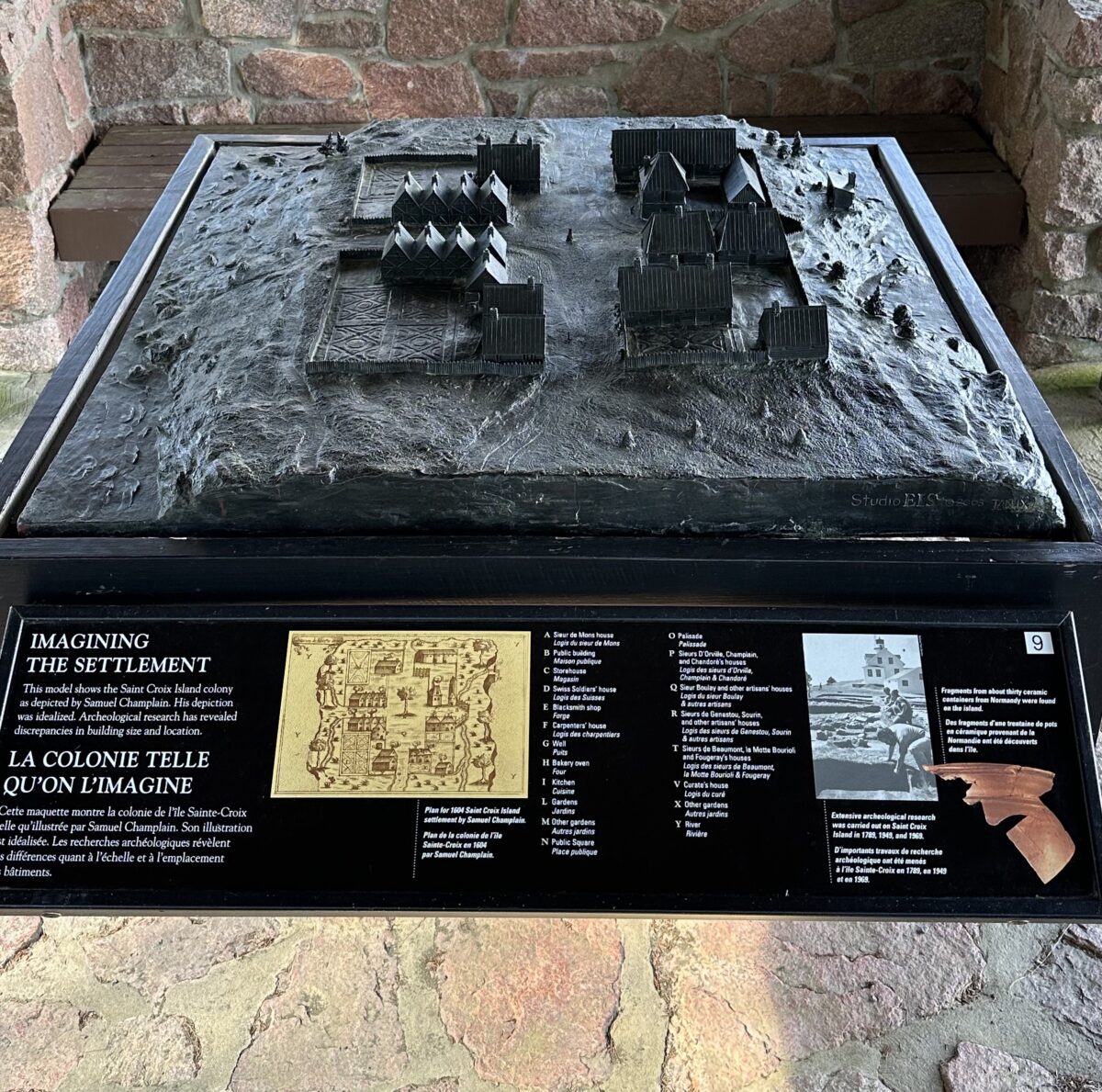St. Croix Island International Historic Site
Our visit to St. Croix Island International Historic Site marked our 430th national park unit – reaching our goal of visiting every national park unit managed by the National Park Service (as of August 2024). Of course, there will be more and we will be delighted to visit them, but achieving 430 was an amazing end to an incredible journey.
About St. Croix Island
Unique to St. Croix Island, this historic site is administered by both the United States and Canada, recognizing the historical significance of this place for both countries. Declared a US National Monument in 1949, the site was re-designated as an International Historic Site in 1984.

St. Croix Island (meaning Holy Cross) was one of the first European settlements in North America. In fact, this was the first settlement north of the Spanish settlement at St. Augustine, Florida. Newcomers from France, led by the French explorer and nobleman Pierre Dugua, Sieur de Mons, arrived at this place in 1604. In return for control over the region’s fur trade, Dugua committed to found a permanent colony.
They chose St. Croix Island because of its strategic location. From there they could see anything coming down river and would be able to easily defend their license. Although the island was small, it was only 1/2 mile from the mainland which was rich with freshwater, wood, game and fish. The Passamaquoddy natives had been there for thousands of years, harvesting shellfish and fish from the shore.
Also, the island was situated on the 45th parallel, the same as France, so they felt that this location would be favorable with temperatures similar to what they had at home. They did not heed the warnings of the Passamaquoddy that it was not a good idea to settle on the island.
Establishing a Settlement
Dugua came prepared to establish a permanent settlement. The crew included all the supplies and workers they felt they would need, including bricks from Normandy and the first “prefab” housing.
Unlike other countries, France did not send families to colonize their settlements. They sent 78 men, some as young as 10 years old. As soon as they arrived in June of 1604 and chose their location, they got to work. On the mainland, they planted gardens and erected a water powered mill. On the island they built a French-style community, with a central square surrounded by houses and service buildings. They even built two churches – Protestant and Catholic.

They felt that they were well prepared for life in the new world.
Winter of 1604/1605
Then came the winter – the worst one in years. It was icy cold and windy on the island, made worse by the fact that they had cut down most of the trees for building.
By December, they were snowed in. When they settled on the island, they thought they would be able to easily go over to the mainland to hunt and harvest wood for their fires. But that was not to be. The river iced over, but the huge tidal change caused the ice to break into huge ice floes that blocked them in and made it too treacherous to cross.
That left them with little firewood and even less food, forcing them to survive on salted meat and bread. The supply building was too big, so they couldn’t keep their supplies from freezing. The cider they had froze solid, forcing them to issue it by the pound. There was no fresh water on the island, only melted snow. This meagre diet left them without enough Vitamin C. Scurvy set in and by March almost half of their party had died.
According to the ranger, the noblemen did not succumb to scurvy because they had wine, which gave them a bit of vitamin C. Unfortunately both pastors died. Folklore also tells it that the two pastors had fought incessantly, so the settlers buried them in the same grave so that they could work out their differences in the afterlife!

Spring 1605
In March, the Passamaquoddy came to the island and helped out the settlers giving them tea made of hemlock and spruce, rich in Vitamin C. The survivors waited hoping to see their ship return. Dugua had left for France the previous August to defend his claims on the fur trade, with a promise the be back in March. The ship didn’t return until June.
At this point, they packed up and left the island, taking almost every structure with them. They had learned valuable lessons about North America. This time they chose a more hospitable location, on the mainland with fresh water and in a sheltered harbor, establishing Point Royal (Nova Scotia).
Visiting the International Historic Site
Today, you can visit locations on both the US and Canadian side of the river, where you can learn more about the doomed settlement. From both sides, you can see the island and at low tide it almost seems like you could walk there, but there is no access.
St. Croix International Historic Site is just a few miles south of Calais, Maine. It is small, only 6.5 acres with informational plaques and a collection of bronze statues that depict the Passamaquoddy, the settlers, and Champlain.



Walk the short trail to the island overlook where there is a scale model of the village.

The first sign says it well:
“On this trail, walk in the footsteps of these adventurers and discover one of the earliest settlements in North America.”
Are you trying to visit all the National Parks, or National Park Units?
If your goal is to visit them, one or all, we’d love to help you strategize. Give us a call at (480) 609-3978 or drop us a note here. We always enjoy talking with people who share our passion for visiting these gems of the National Park Service.
#FindYourPark
#SeeAmericaFirst

